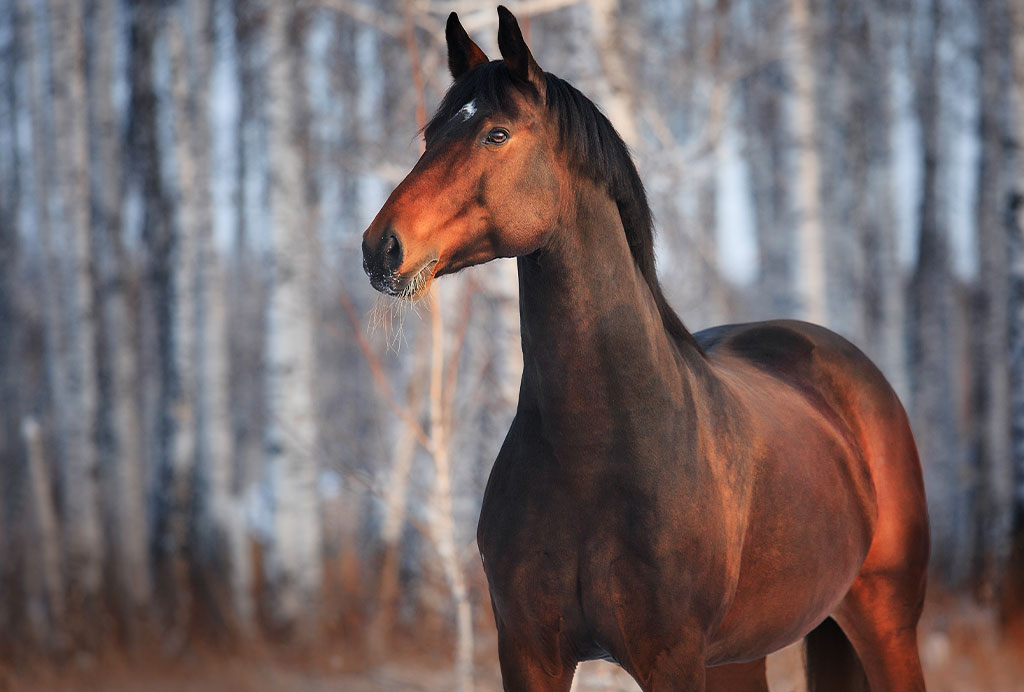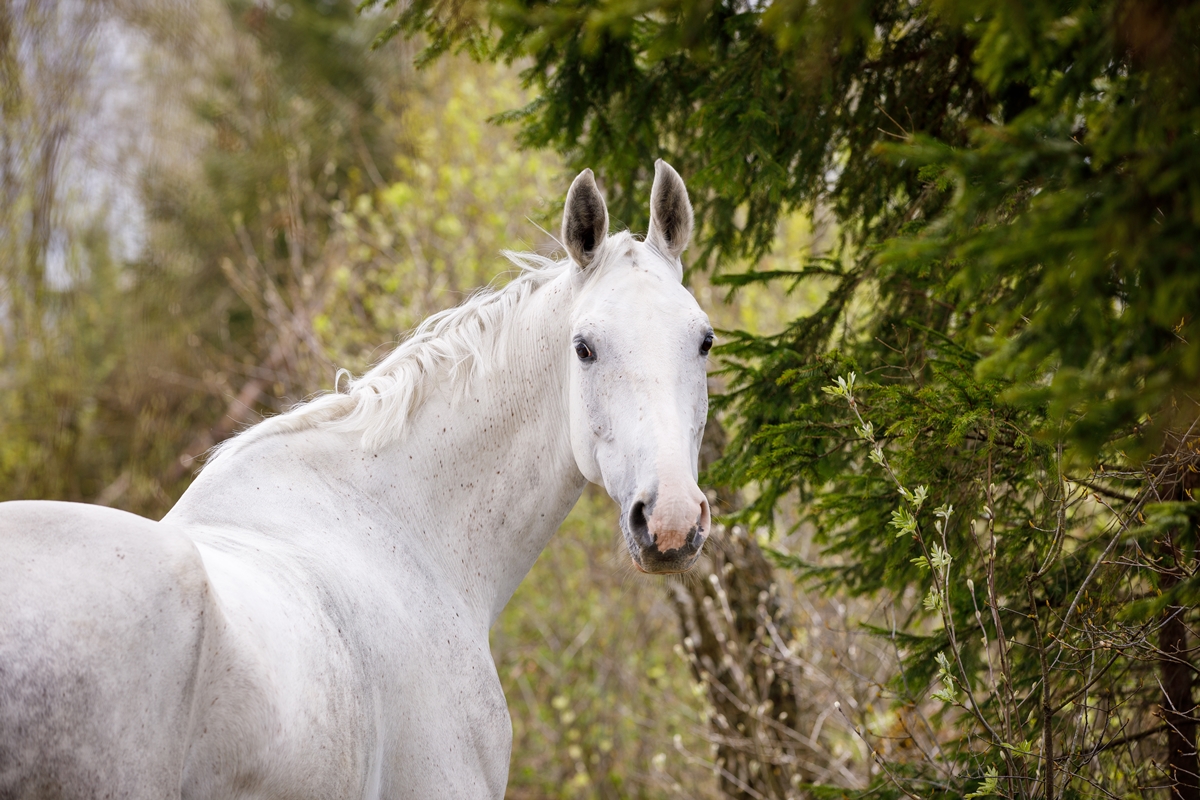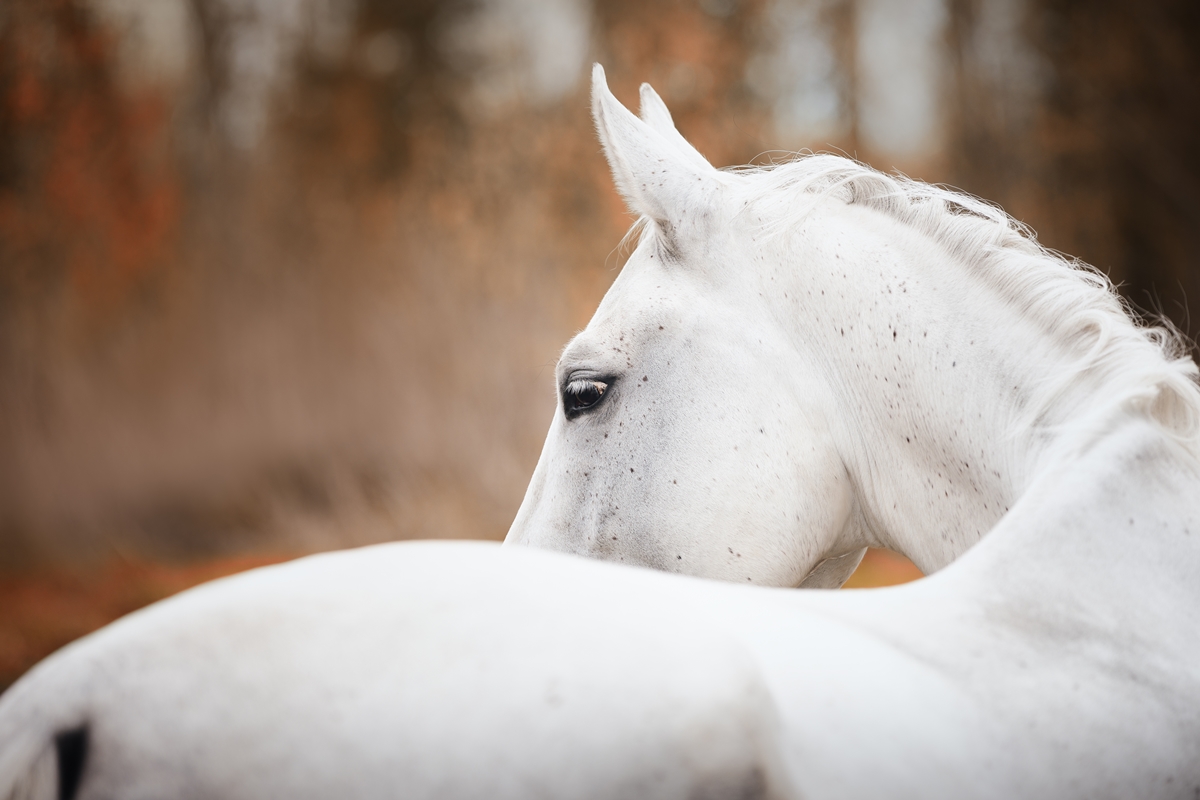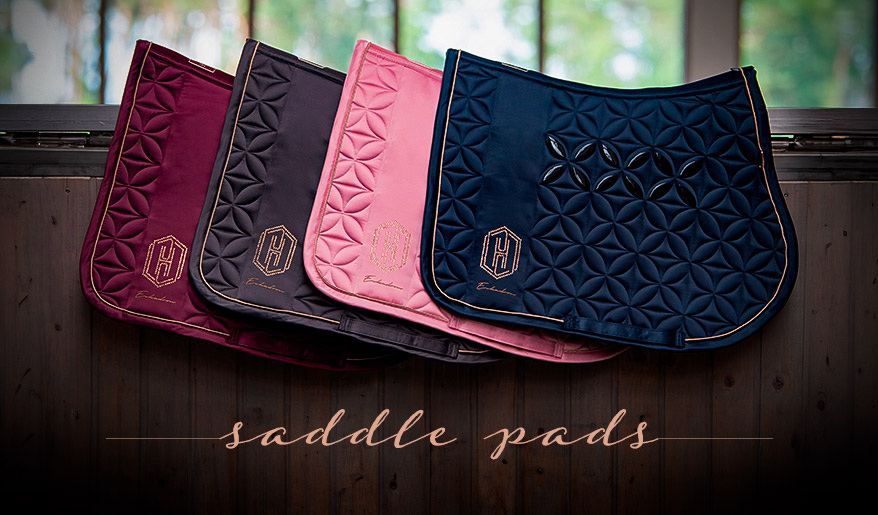
Hosteiner is a breed that originated from the German region of Holstein. These horses have a long and rich history that goes back over 800 years. Hosteiners became popular as strong sport horses perfect for show jumping.
History of Hosteiners – one of the warmblood breeds from Germany
People bred strong horses with a visible mixture of Spanish horses from the Middle Ages – as work and military horses. At the beginning of the 13th century Gerhard I Count of Holstein-Itzehoe and Stormarn gave the Uetersen monastery the right to turn out their horses on uncultivated lands. Then the historic Germanic region Hostein became the origin place of the breed Hosteiner.
At the turn of the 18th and 19th century, horses with bigger build but with energetic and lively temperament were the most popular. The breed was used in agriculture and as a warmblood draught horse for elegant carriages (up until industrial development and widespread motorization).
During the Napoleonic Wars, the breed sustained major losses. The breeding started again in 1850 and thanks to the addition of warmbloods (mainly Thoroughbreds) to the gene pool, a lighter Hosteiner horse was created – perfect for horse riding. The French master Guériniere valued the breed’s vast abilities that allowed the horses to be trained according to the classical riding school.

In 1886 the first stud book was created. It was issued by Georg Ahsbahs from Sommerlander Riep. Five years later the local peasant breed associations were combined to change them into a Hosteiner Breeding Association that created its own herds of Holsteiner stallions.
After the Second World War, the population drastically decreased. During the First and Second Wars, the Association changed ownership from private to state. However, in 1960 the breeding association was once again led by breeders.
In the middle of the 20th century, the breed went from being work horses into sport animals. The herd of stallions was diversified by adding Thoroughbreds (Cottage Son, Marlon, Ladykiller, and his son - Landgraf I) and Selle Français (Cor de la Bryère). Soon after the breeding in Holstein region became a German sport horse stud. These days Holsteiners are typical warmbloods that retained strength and stamina after their draught ancestors.
Breeding in accordance with the standards of German riding horse
Today, Holsteiners are bred in accordance with the German Riding Horse standard – as a light riding horse. The breeding is mostly situated in northern Germany – in the original Holstein (private ownership) in an auction centre and in Elmshorn with their herd of stallions. That herd consists of around 70 stallions.
There are around 200 stallions in private breeding. What’s interesting the number of breeding mares is around 8000. Holsteiners are also bred in other European countries – mainly in Denmark.
Holsteiner | characteristics, origin & disciplines
Anatomy: Holsteiners – characteristics of the breed
Holsteiner is a strong warmblood horse that combines beauty, strength, great stamina, and elegance.
A Holsteiner has an expressive, medium-sized head set on a long and muscular neck. The back is strong, the withers prominent and elongated. The body is wide and deep, sometimes with a too-shallow back ribcage.
The muscular and sloping croup is the powerhouse of these horses. The breed has strong yet dry legs with powerful joints and big hooves. The strong pasterns make the breed a perfect choice for every show jumper. These horses have a powerful gait, especially canter, and great jumping abilities.
Height: 162-175 cm
Weight: 650-850 kg (1400-1800 pounds)
Breed’s coat variations: all basic coat colours – most frequently bay or grey, less commonly black and chestnut
Holsteiners – Importance
Holsteiners are regarded as intelligent, brave, and focused horses. They have a balanced temperament and nicely muscular body with strong back as well as legs. This makes the breed perfect for strenuous physical activity, namely show jumping.
These horses are very friendly toward humans. They are also quick learners and eager to work. The calm yet not skittish Holsteiner is also great for carriage driving, recreational riding, and simply as a companion animal. The horses are quite easy to handle. Even foals, which have not yet started their sports training show amazing abilities and eagerness to jump.

Famous Holsteiners
Holsteiner are vastly known from international show jumping competitions. Below we present two famous stallions which offspring is valued till these days.
Landgraf I
Dark bay stallion after a Holsteiner named Ladykiller (born 1966, 170 cm) is a sire to 130 certified and active Holsteiner stallions in Germany, Europe, and the USA.
Landgraf dominated the breeding in Holstein-Itzehoe for over ten years. The success of his offspring in breeding as well as in sport, made the demand for the stallion almost insatiable. As a result, management decided to regulate the usage of Landgraf to ensure the stud will have the pre-emption rights. Additionally, the stallion could only bred with mares that belonged to a specific horse type and met the predetermined requirements for the breed.
While visiting Elmshorn, besides the hundred-years-old Riding and Driving school, you can see a bronze statue of Landgraf I: a symbol of a modern sport Holsteiner horse and great breeding. The horse died in 1996 after living for 30 years.
Landgraf I
Capitol I
Another stallion that has gone down in the history of Holsteiner breeding is the grey Capitol I (born in 1975, 169 cm). Sire to many world-famous show jumpers including a winner of the World Cup from 2001, Dobiel’s Cento, and Carthago Z – horses that participated in the Olympic Games in Sydney and won the gold and silver medal during the Grand Prix Aachen (CHIO Aachen 2000). The following generations of horses also included sports legends (for example stallions Caretino and Contender).
Capitol I - Holstein Stallion
Other famous horses of this breed include:
- Show jumping: Cassini I, Egly, Fenek v. Fasan, Loretto (after Lombard), Meteor (after Diskus), Romanus (after Ramzes), Fortun (after Frivol xx), Torphy (after Reinald xx), Dobel's Cento, Caletto II, Calvaro, Lianos by Landlord, Fein Cera (after Landadel), Cöster, Cumano (after Cassini I), In Style (after Accord II), Carlsson vom Dach (after Cassini I), Corradina
- Dressage: Aar (after Heiss) in pair with Dr Reinerem Klimke, Antoinette (after Anblick xx), Granat (after Consul), Corlandus (after Cor de la Bryère), Chacomo
Casiro *2002 by Cassini I - Landgraf I (Sosath Stallion Show 2019)
Holsteiner – price
The price of a Holsteiner horse might differ depending on the animal’s age, abilities, lineage, and success in sport. A highly trained Holsteiner might cost significantly more than a young untrained horse. The price might also differ between regions and the current situation on the horse market. Geldings might also be cheaper than a breeding stallion or mare.
The price varies from around 25 thousand PLN up to 450 thousand PLN (around 5 thousand pounds to 90 thousand pounds).
Summary
Thanks to their great sports abilities and versatility, Holsteiners are valued not only in Germany. These horses are frequently used in show jumping, recreational riding, as well as dressage. This warmblood, thanks to its intelligence, agility, and strength, can participate in the highest level of sport.
Take care of your horse’s back by choosing an adequate half-pad. To find the best one, visit our shop: Half-pads
Equishop: +48 784 039 784
E-mail: contact@equishop.com
News from Equishop:







